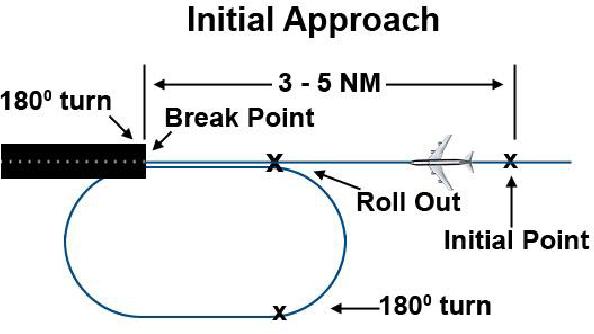
Overhead Approach Pattern
The overhead approach pattern is a series of predetermined maneuvers prescribed for
VFR arrival of military aircraft (often in formation) for entry into the VFR traffic pattern.
This pattern allows high-performance aircraft, such as fighters and certain types of
trainers, to transition into the terminal area simultaneously with slower aircraft that are
flying a standard traffic pattern.
Overhead Approach Pattern Components
The components of the overhead approach pattern are initial approach, break point,
"the 180," and final approach. The overhead approach pattern components are depicted
in Figure 9-3.
Figure 9-3 -- Overhead approach pattern components.
Overhead Approach Pattern Component Descriptions
A description of the component parts of the overhead approach pattern follows:
Initial approach This is a line-of-flight that follows the extended centerline of the
landing runway. Initial approach varies in length from 3 to 5 miles. Normally, an aircraft
flies the initial approach part of an overhead approach 500 feet above the elevation of
the standard traffic pattern for the airfield.
Break point This is a point, normally just above the landing threshold, where the
aircraft is turned (left or right, depending on the direction of traffic flow) 180 so as to be
on the downwind leg.
9-13

